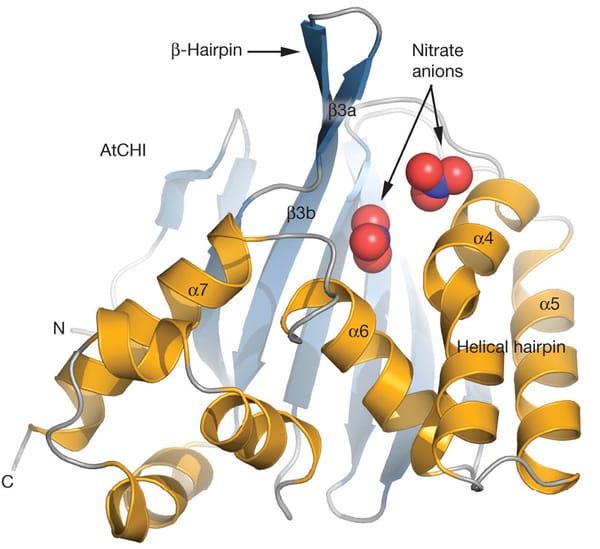The decline of British bee power
Kelly Oakes reports on a possible cause of falling bee numbers

Pesticides may be the bees knees when it comes to protecting crops, but researchers from the UK and France have shown that exposure to one common pesticide leads to a dramatic loss to the number of queen bees, and another pesticide affects foragers’ ability to find their way back to the hive. The new findings might go some way to explaining recent decline in bee numbers.
Scientists at the University of Stirling and the Lancaster Environment Centre, both in the UK, exposed colonies of bumble bees to realistic levels of imidacloprid, a pesticide chemically related to nicotine, in the lab. They then placed the colonies into the field to forage on gardens, wildflowers and a variety of crops, and watched as the colonies that had been exposed to the pesticide suffered an 85% reduction in the number of new queens compared to colonies that were not exposed. The exposed bees also gathered less food and produced less workers, but it was the drop in queens that was most dramatic. The findings were published in the journal Science.
A meta-analysis published last year showed that imidacloprid was not lethal to bees, but since then there has been growing evidence from laboratory trials that the pesticide does harm memory and navigation. This new research is the first time such an effect has been found in realistic conditions.
A separate team of scientists from France found that bees exposed to low doses of a different pesticide, called thiamethoxam and belonging to the same family as imidacloprid, had trouble finding their way home. The team glued tiny radio-frequency tags to the backs of 653 honey bees. Up to 43.2% of the bees given the pesticide did not return to their hive, depending on how far away from the hive they were released, compared with 16.9% of the untreated bees. The researchers say that this level of homing failure could put a colony at risk of collapse.
The news comes five years after bee colonies in the US were devastated when they were hit by a strange condition called colony collapse disorder. Millions of bees vanished from their hives, leaving young bees to fend for themselves. The latest US Department of Agriculture data, released in 2011, suggests that colony collapse disorder is still alive and well – unlike the bees affected by it.
Bees, along with other insects, pollinate around one third of the crops we eat. But in the past 25 years honey bee numbers in the US and UK have suffered a drop of around 50%. The reason for the decline has been unclear, but pesticides, parasites and the destruction of flower-rich habitats are thought to be the key reasons.
Several European countries have stopped using certain pesticides for fear of falling bee populations, but the UK is not among them. A spokesperson from the Department of Environment, Food and Rural Affairs told the Guardian that the new research did not change the governments position, but they would not hesitate to act if presented with any new evidence.
Campaigns to encourage the growth of wildflower meadows – a bee’s favourite habitat – will go some way to encouraging numbers to rise. But these studies, and others, show that it is unlikely to be that simple. Identifying the cause of colony collapse is essential to protect food security, as well as the wild flowers that bees pollinate and the animals that depend on them.








